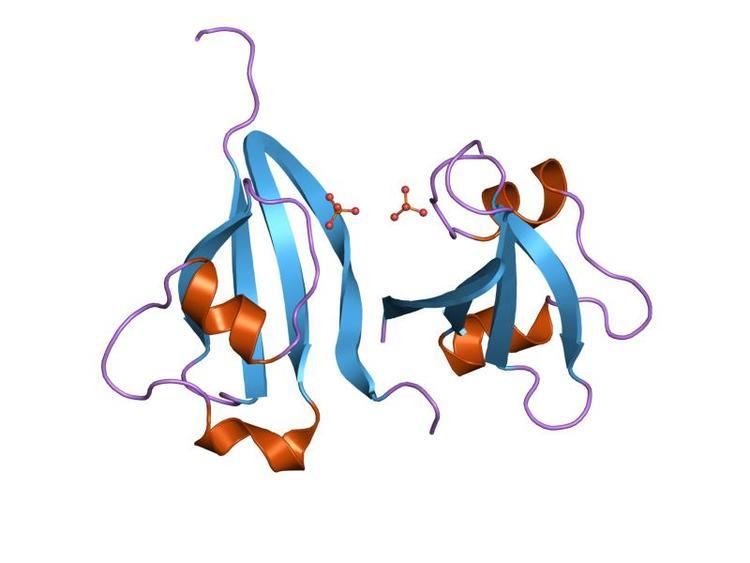Symbol CKS InterPro IPR000789 SCOP 1cks | Pfam PF01111 PROSITE PDOC00728 SUPERFAMILY 1cks | |
 | ||
In molecular biology, the cyclin-dependent kinase regulatory subunit family is a family of proteins consisting of the regulatory subunits of cyclin-dependent protein kinases.
In eukaryotes, cyclin-dependent protein kinases interact with cyclins to regulate cell cycle progression, and are required for the G1 and G2 stages of cell division. The proteins bind to a regulatory subunit, cyclin-dependent kinase regulatory subunit (CKS), which is essential for their function. This regulatory subunit is a small protein of 79 to 150 residues. In yeast (gene CKS1) and in fission yeast (gene suc1) a single isoform is known, while mammals have two highly related isoforms. The regulatory subunits exist as hexamers, formed by the symmetrical assembly of 3 interlocked homodimers, creating an unusual 12-stranded beta-barrel structure. Through the barrel centre runs a 12A diameter tunnel, lined by 6 exposed helix pairs. Six kinase units can be modelled to bind the hexameric structure, which may thus act as a hub for cyclin-dependent protein kinase multimerisation.
